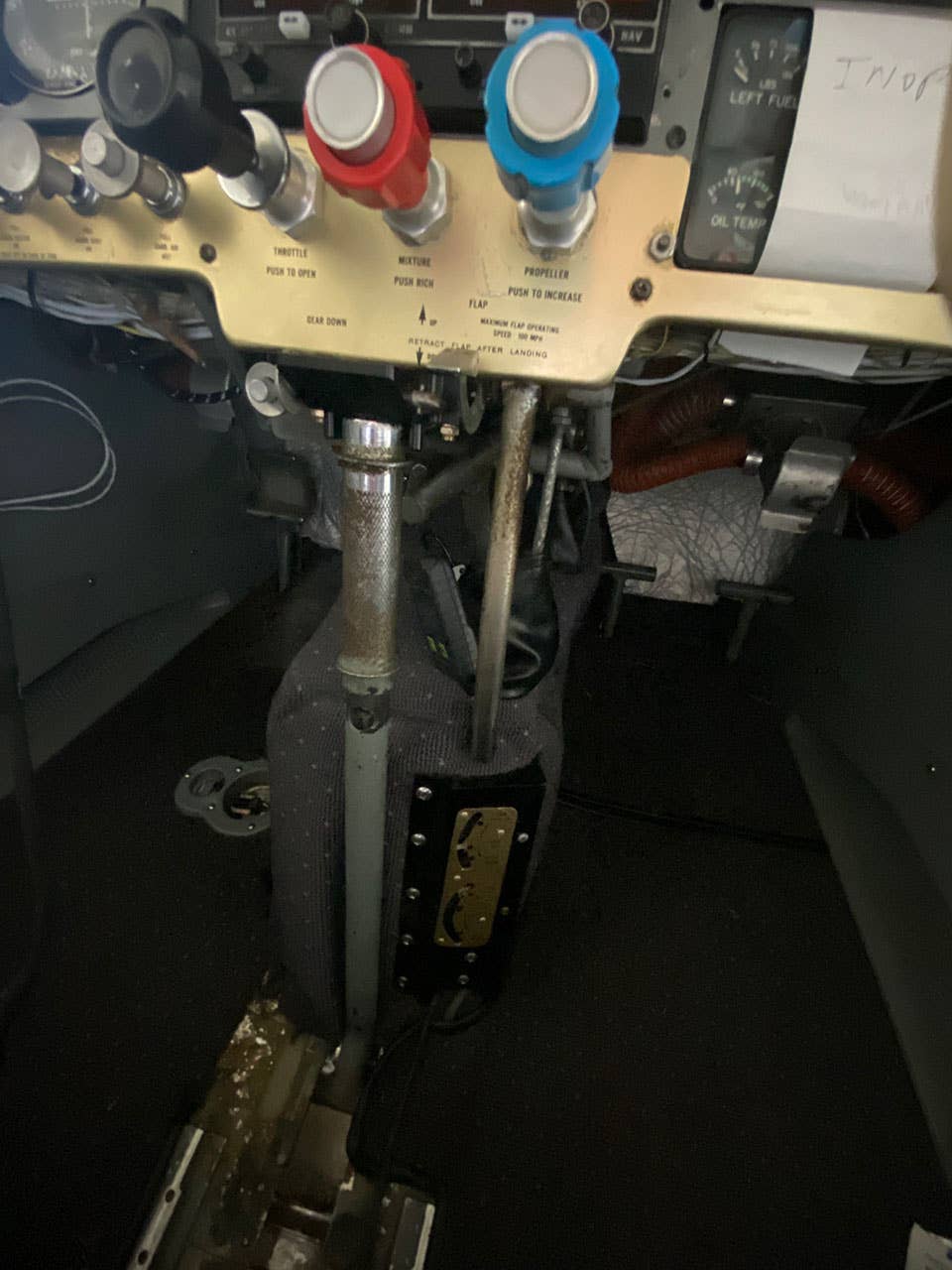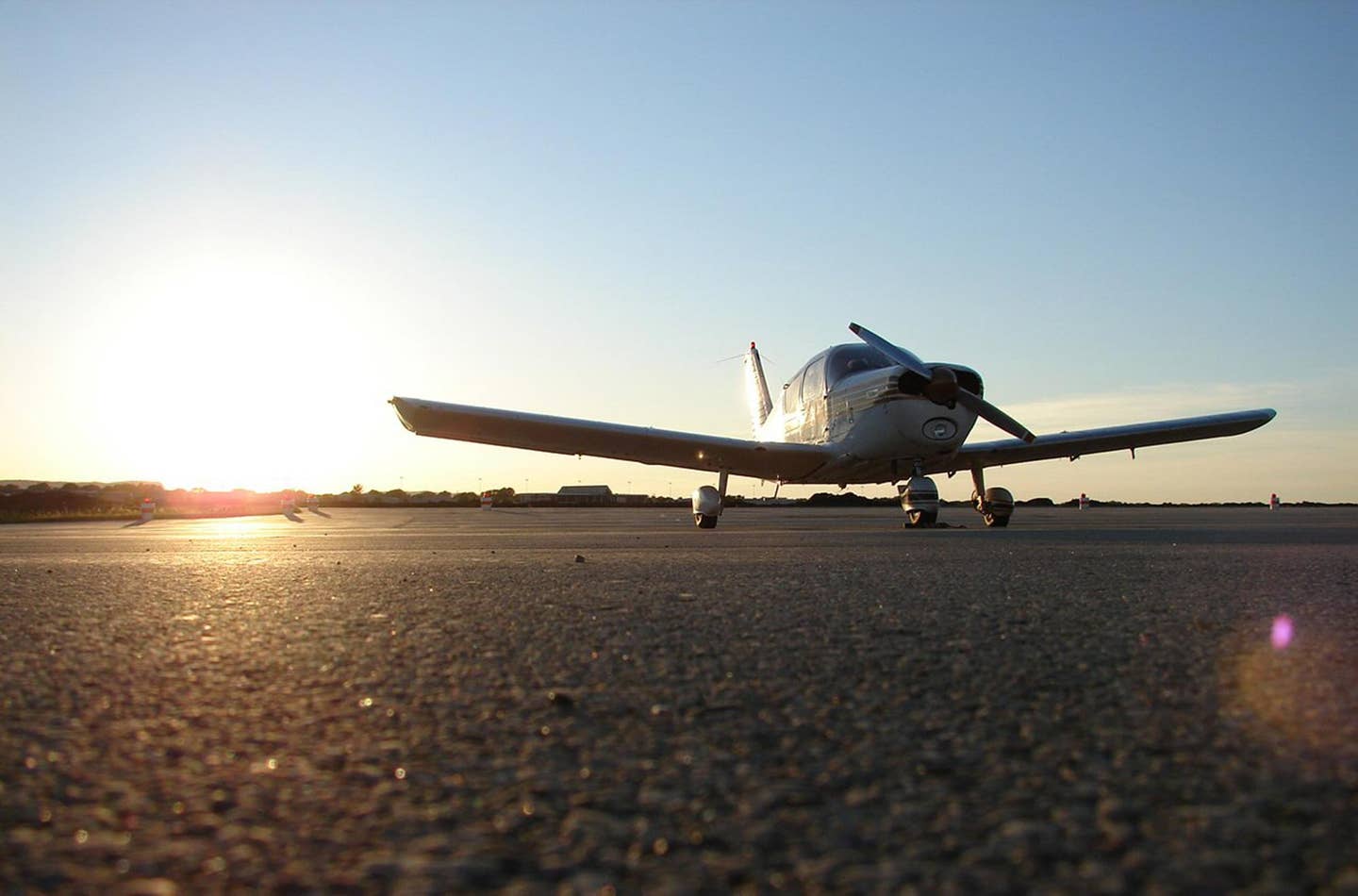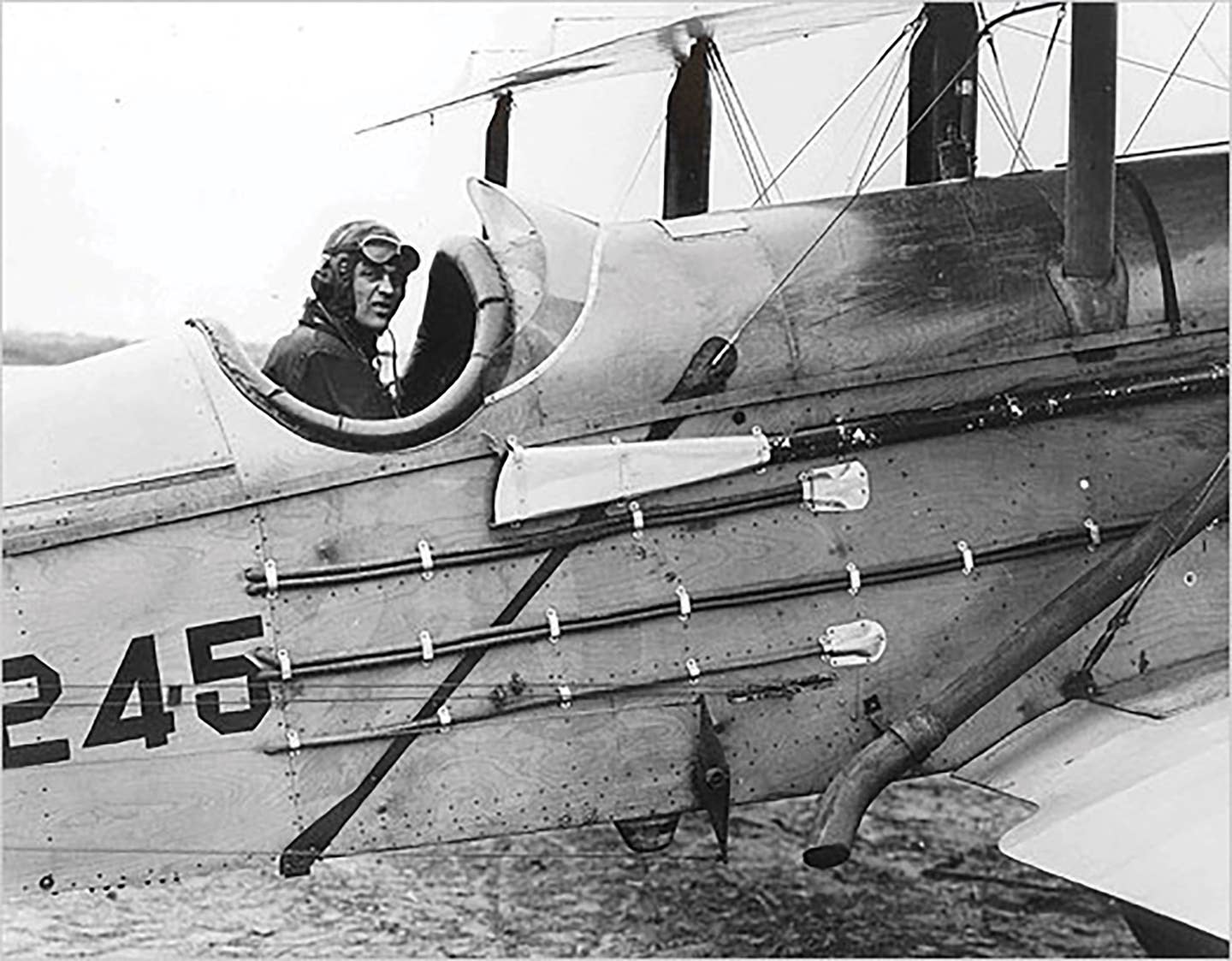Gear Systems
The landing gear system uses stacked rubber cushions for shock absorption, a simple trouble-free method until time catches up with it, requiring disc replacement. Check for elasticity by watching for…

More modern Mooneys feature electric flaps and landing gear actuation, but owners of older planes, like this 1965 model, are quite fond of their old-school mechanical controls. Photo by Jeremy King
The landing gear system uses stacked rubber cushions for shock absorption, a simple trouble-free method until time catches up with it, requiring disc replacement. Check for elasticity by watching for the gear to rebound after unloading. Pre-1981 Mooneys had a supplemental automotive-type shock absorber on the nosegear, eliminated in later models.
Prior to 1967, when electrical actuation of the landing gear became an option, pilots used a beefy lever between the front seats to put the wheels up and down, a perfectly reliable process as long as the system's joints and assist springs were maintained properly. Pilots of older Mooneys like to show off their expertise by snapping the gear up right after liftoff in front of a watching crowd.
The electrically driven gear system, which became standard in 1969, works equally well; to prevent inadvertent retraction on the ground, an airspeed lockout inhibits the gear motor until reaching about 65 knots. Normal squat switches wouldn't work with the stiff rubber-disc gear. An override control permits retraction if the lockout balks. Emergency extension was done by turning a hand crank; in 1978, it was changed to a ratcheting handle mounted in the floor behind the front seats.
The wing flaps extend to 33 degrees and are electrically actuated in later models. Before the M20C, a manual flap handle under the panel was slipped into notches for half and full travel, which was only 21.5 degrees. This was changed to a hydraulic hand pump for 1962; a few strokes put the flaps down, and a pressure-dump valve allowed them to retract. Electric flaps were introduced in 1969.
The famous "backward" tail pivots for trim, vertical fin and horizontal stabilizers moving as one unit. All of the Mooney controls are driven by pushrods instead of cables running over pulleys, so there's no slop in the circuits. In an effort to enforce safety by preventing loss-of-control in-flight, all Mooneys built from 1965 to 1977 had "positive control" installed, a full-time vacuum-driven wing-leveler autopilot that was both helpful and annoying. One depressed a thumb-button to override the PC for turns; otherwise, the airplane would try to roll itself level. A stout rubber band could defeat the constant co-pilot, or the override button and valve could simply be pried out of the control yoke and tossed into the map pocket.
The Mooney fuselage incorporates a welded steel-tube cage around the cabin area, to which a conventional semi-monocoque tailcone is attached. A 120-pound capacity baggage compartment is reached by opening a swing-up door on the right side of the fuselage, its sill at chest height due to the cabin structure. The right-hand cabin entrance door is reached by a short step onto the wing-walk; the flap is placarded "no step." Pre-M20J Mooneys had a retractable assist step, cranked up by twisting 2.5 turns of a wheel on the cabin sidewall, but a streamlined fixed step was used after the 201 was introduced.
The older Mooneys with straight-up windscreens had removable access panels in the upper boot cowl that facilitated maintenance on radios and instruments. The tight engine cowling requires screwdriver work for removal, and the compact engine compartment is not known for ease of maintenance. To gain a bit more performance at altitude, a "power boost" control fitted to the Super 21 and later models bypassed the air filter with ram air when actuated, gaining another inch or so of manifold pressure. It, plus closed-up cowl flaps, maximized speed in cruise. The ram air feature was discontinued in the 1990s.

Subscribe to Our Newsletter
Get the latest Plane & Pilot Magazine stories delivered directly to your inbox






